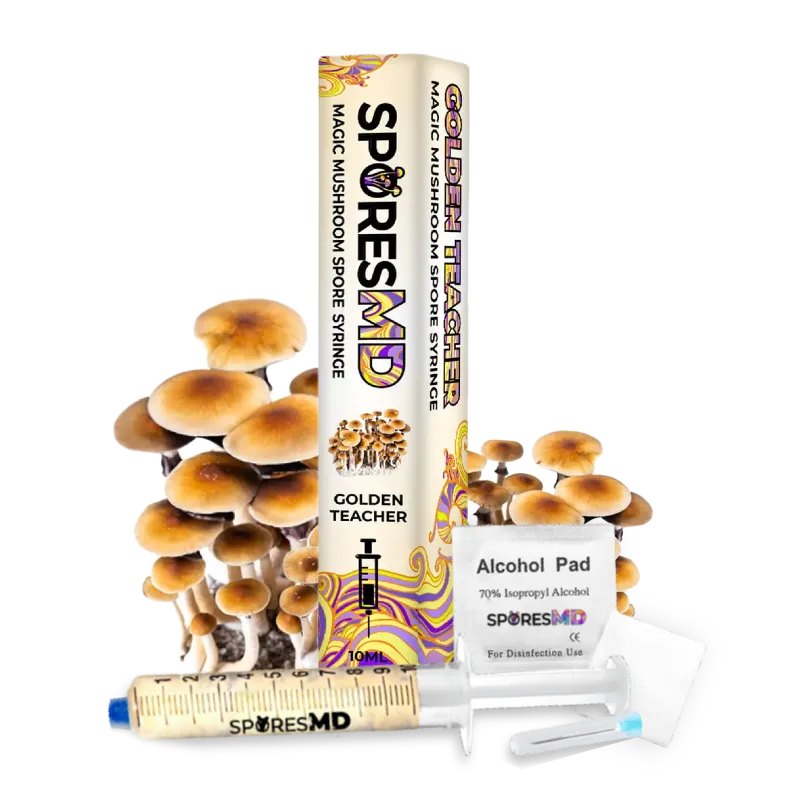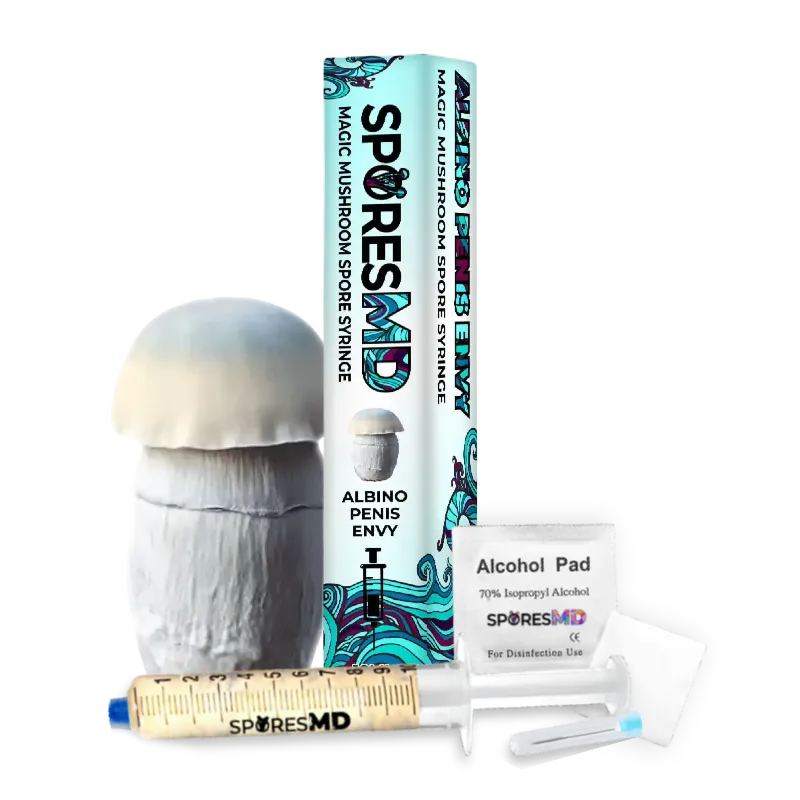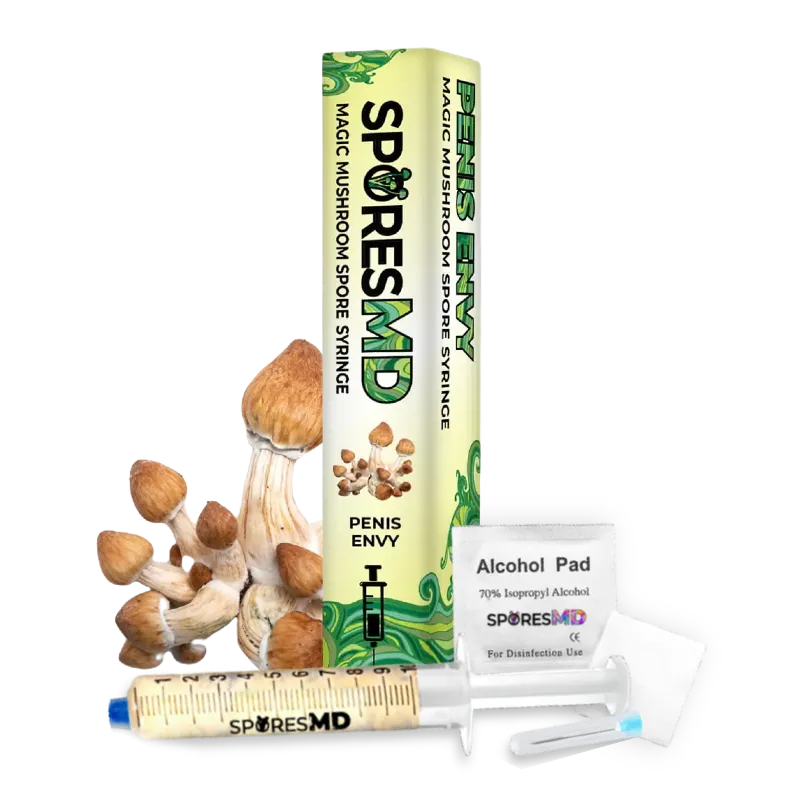Mushroom spores are tiny. They’re the seeds of the mushroom world. These microscopic particles hold the key to mushroom reproduction.
Spores spread and grow into new organisms. They’re crucial for cultivators. Spores offer fresh genetics, which means stronger mushroom cultures. When a culture degrades, spores can rejuvenate it.
Using spores isn’t simple. You start from scratch, making the process more complex. But the reward? A robust and healthy mushroom crop.
Key Takeaways
- Mushroom Spores Basics: Mushroom spores are microscopic particles that serve as the reproductive units for fungi, containing all the genetic material necessary to grow new mushrooms.
- Differences from Seeds: Unlike seeds, which are visible to the naked eye and primarily serve as food for animals, mushroom spores are tiny (3-12 microns) and originate from the gills of mature mushrooms.
- Spore Dispersal Methods: Spores are dispersed through various mechanisms including wind, water, animals, and mechanical ejection, which enable them to reach diverse and distant environments for propagation.
- Life Cycle of Spores: Spores germinate into hyphae, which form networks that develop into mycelium. Mycelium absorbs nutrients and eventually leads to mushroom formation.
- Cultivation from Spores: Growing mushrooms from spores involves creating spore prints or mushroom spore syringes, maintaining specific temperature and humidity conditions, and using nutrient-rich substrates.
- Uses and Risks: Mushroom spores are used for edible and medicinal mushroom cultivation, offering health benefits. However, they must be handled carefully to avoid inhalation risks and to ensure correct identification to prevent poisoning.
What Are Mushroom Spores?
Mushroom spores are the fundamental units of reproduction for fungi. Despite their microscopic size, spores are vital for the lifecycle and propagation of mushrooms.
Understanding Spores as Reproductive Structures
Mushroom spores contain all the genetic material necessary to form a new organism. When conditions are favorable, spores grow into mycelium, the root-like structure that absorbs nutrients from the environment.
- Microscopic Size: Spores measure between 3-12 microns.
- High Quantity: Thousands of spores can fit on the tip of a pencil.
- Spore Discharge: Spores are released in a cloud-like manner and dispersed by wind or other mechanical means.
Differences Between Spores and Seeds
Unlike seeds, which are visible to the naked eye, mushroom spores are microscopic. They serve different purposes and originate from different parts of the fungi.
| Characteristic | Spores | Seeds |
|---|---|---|
| Size | 3-12 microns | Visible, larger |
| Origin | Gills of mature mushrooms | Fruit or mature fungi |
| Reproduction | Used for dispersal and reproduction | Primarily source of food for animals |
| Visibility | Require microscope for individual spores | Visible without aid |
Mushroom spores grow on specialized structures called hyphae, specifically on the gills. Spores are then discharged explosively in certain species, traveling distances varying from a few microns to several meters, depending on the discharge mechanism.
Understanding these differences helps in differentiating how fungi propagate compared to plants, which rely on seeds for growth and dispersion.
Mushroom Spore Dispersal Mechanisms
Mushrooms use various methods to disperse their spores. Understanding these mechanisms is crucial to comprehending their reproductive strategies.
Wind and Water Dispersal
Mushrooms often rely on wind and water to spread their spores. Wind dispersal is the most common method. Tiny spores are easily lifted and carried long distances. For instance, spores of wheat rust can travel up to 1243 miles (2000 km) through the wind.
Water also plays a vital role. Rain droplets hitting the mushroom cap can splash spores to new locations. This process ensures that spores reach diverse environments, increasing the chances of successful colonization.
Animal and Mechanical Dispersal
Animals contribute to spore dispersal too. Insects, mammals, and birds can carry spores on their bodies. When these animals move, the spores get transported to new areas. For example, a deer brushing against a mushroom can pick up and later drop spores miles away.
Mechanical dispersal involves the forceful release of spores. Some mushrooms use specialized structures to eject spores with precision. Changes in spore shape can affect the trajectory of ejected spores, showcasing nature’s engineering prowess.
The Life Cycle of Mushroom Spores
Mushroom spores start the life cycle of mushrooms. Understanding this process helps in successful cultivation and research.
From Spore to Mycelium
Spores represent the first life stage in mushrooms. When spores land in a suitable environment, they germinate. Hyphae, the thread-like structures, emerge from the spores.
Here is a simplified process:
- Germination: Spores land in nutrient-rich environments.
- Hyphae Formation: Hyphae branch out and form networks.
- Mycelium Development: Hyphae networks fuse to form mycelium.
The Role of Mycelium in Growth and Reproduction
Mycelium gathers nutrients and water. It forms a dense network to support mushroom growth. When conditions change, like temperature or moisture levels, mycelium initiates fruiting.
- Nutrient Absorption: Mycelium absorbs nutrients and moisture.
- Fruiting Initiation: Environmental changes trigger mushroom formation.
Mycelium condenses into primordia, leading to mushroom development. Fruit bodies release new spores, beginning the cycle anew.
How to Grow Mushrooms From Spores
Growing mushrooms from spores requires specific knowledge and steps. Here’s how you can do it effectively.
Preparing Spore Prints and Spore Syringes
Harvest spore prints directly from a mature mushroom. You’ll need a sharp knife, a glass jar, a sheet of light-colored paper, tweezers, and a resealable baggie.
- Cut the stem off the mushroom close to the gills.
- Place the cap, gill-side down, on the paper.
- Cover the cap with the jar and leave it for 24 hours.
- Remove the jar and cap. You’ll now see a spore print on the paper.
- Store the print in a baggie.
Conditions Required for Spore Germination
Spores need specific conditions to germinate.
- Temperature: Maintain 70-90°F for optimal growth.
- Humidity: Keep the environment at 90% relative humidity.
- Substrate: Use nutrient-rich substrates like grain, straw, or compost.
Proper conditions are crucial for the mycelium to form. After inoculation, monitor the growth and maintain a sterile environment to avoid contamination.
Spore germination is a delicate process but understanding these steps will increase your success rate. Follow these guidelines and you’ll see fruitful results in your mushroom cultivation endeavors.
Potential Uses and Risks of Mushroom Spores
Mushroom spores have fascinating uses and notable risks. Understand both to make informed choices.
Edible and Medicinal Applications
Edible mushrooms, like shiitake and portobello, start from spores. Cultivating mushrooms at home is possible, offering fresh, organic fungi. Use mushroom spores to begin your cultivation journey.
Medicinally, mushrooms like reishi and lion’s mane boast potential health benefits:
- Boosting the immune system: Reishi mushrooms contain polysaccharides.
- Cognitive Function: Lion’s mane improves memory in studies.
Health Risks and Safety Considerations
Mushroom spores can pose risks if improperly managed. Misidentifying toxic mushrooms could lead to severe poisoning.
Inhaling spore dust can cause respiratory issues. Use a mask when handling spores to avoid health concerns. Store spores in controlled environments to prevent contamination.
To stay safe:
- Verify Mushroom Source: Only obtain spores from trusted suppliers.
- Handle with Care: Wear protective gear during cultivation.
Thoroughly research and follow safe practices when using mushroom spores.
Conclusion
Understanding how mushroom spores work opens up a world of possibilities for both amateur and professional mycologists. Whether you’re interested in cultivating mushrooms for culinary, medicinal, or research purposes, knowing the intricacies of spore germination and mycelium formation is crucial. You can know all about it at SporesMD. Always prioritize safety by sourcing spores from reputable suppliers and using appropriate protective gear. With thorough research and careful handling, you can harness the benefits of mushroom spores while minimizing potential risks.

![How Do Mushroom Spores Work? 5 Key Facts You Need to Know [2024 Update]](https://sporesmd.com/wp-content/uploads/2024/02/how-do-mushroom-spores-work-featured-image.webp)



